Indian nuclear triad. Ground and air components
Its other name is Prithvi-3, the other two OTP with that name are designed for ground forces (Prithvi-1, 150 km range, 1 warhead weight per ton), and Air Force (Prithvi-2, km 250 range, experimental launches were conducted on the 350 km with a different guidance system, the mass of the warhead 0,5 t). The first Prithvi appeared at the beginning of the 90s, and was adopted in 1994. Available for this missile in service with 24 launchers in service with two missile groups. It could be considered an analogue of our "Point-U", and the range is comparable, but technologically it is much lower in class, at about the level of the decommissioned French OTP Pluto or the American Lance. The second, aeroballistic, is “successfully tested” in the best Indian style from 1996, then there was a break until 2009, and they continue to this day - the last launch took place at the beginning of this year, it was 20. that 19 launches were either successful or partially successful. The question is, citizens, and if your tests are so successful, why are they continuing for 10 for years, if you don’t remember about the launch of 1996 and the break in 13 for years? Maybe you keep back?
OTR "Prithvi-1" on PU
"Prithvi" - liquid missiles, and no mention of capsulization of the tanks was found, which, in general, means all the same problems that were on our old BRs with LRE, which did not have such - a long time to prepare for launch, limited the time spent in combat status, the need to drain the fuel and oxidizer and various technical operations with the rocket. Although, by the way, on the well-known OTRK "Elbrus", the time spent by the missiles in the filled state was guaranteed up to the 1 year (in a hot climate - twice as short), and in a vertical position, that is, in readiness for launch - up to a week. The Indians, in theory, could easily reach comparable indicators - yet, not technology at the level of “Yars” and quite good for the teeth. But did they come out? And on the marine version of Prithvi (that is, Dhanush), there are not one but two steps, the first stage with a solid-fuel motor has been added. They tested this naval BR from 2000, from two patrol ships of the Sukanaya type - from a helicopter deck, specially reinforced for this, and the rocket was prepared for launch in a helicopter hangar, where they can be stored up to 2 missiles. Also one launch took place from the destroyer "Rajput" (pr.61ME, the relatives of our last "singing frigate" are still in full force in the Indian Navy). The usefulness of this weapons it seems doubtful - the surface ship will have to come very close to the coast of Pakistan, the ammunition is small, it seems that the Dkhanush complex was developed in case the situation with the SLBM fails. Now it does not develop, new carriers do not appear, so we can assume that there are all 3 carriers capable of releasing 3 OTR and 3 more after some time. If not drown. Being in service with this Indian miracle weapon can be justified, besides the traditional corruption points, also by the rivalry inside the Navy between the submarine and the surface forces that feel "nuclearly deprived." Well, they developed it, tested it, invested money - and now this bag is being dragged without a handle.
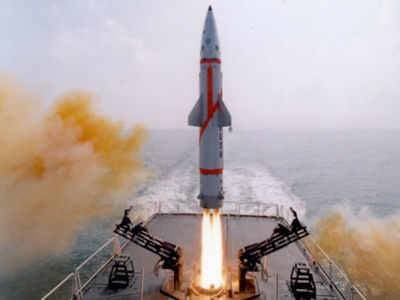
Launch OTR surface-based "Dkhanush" from the deck of the ship of the Indian Navy. As you can see, everything is organized very primitive and more suitable for launching launch vehicles, rather than modern combat missiles.
Preparations for the launch from the board of the Sukanaya type patrol ship
Developed in India and the Kyrgyz Republic with nuclear equipment, so far only ground-based. It is called "Nirbhai", has a mass of more than 1,5 tons, the range is declared more than 1000 km, the CU weighs 200-300 kg, which is not enough, of course, for the Kyrgyz Republic, and even more so for the nuclear charges that India still has. So she’s still only nuclear in the plans, she’s likely to have a naval option - but sometime later. The CD is subsonic and outwardly looks fairly standard and looks like, perhaps, more on the American "Tomahawk" than on our CD and their Chinese or Iranian clones. In the meantime, the rocket was tested 5 once with 2013, only 2 was successful launches, another two tried to declare partially successful, although, for example, it was strange to assume that the launch in which the CR flew 128 km instead of 1000 and crashed. Yes, India also has the BrahMos anti-ship missiles, manufactured by the Russian-Indian joint venture, which can also hit ground targets. But it will never be nuclear, despite its origin from the non-export anti-ship missile system Onyx, about which nothing says that it does not have a non-nuclear option. Non-proliferation regime must be honored.
Launcher experienced ground-based KR "Nirbhay." Neither of which TPK speech and close is not.
To replace the Prithvi-1 OTR, India is developing a new solid-fuel OTR Prahaar with a mass of 1,3 t with a range of up to 150 km, but it is declared a high-precision, but only non-nuclear weapon. Obviously, the mass of warheads in 150kg is insufficient for nuclear charges. A feature of this complex is the whole 6 missiles on a mobile launcher, which is more characteristic of the MLRS, and not for OTRK. So far, there have been 2 launches that were declared successful, but there were as many 7 years between launches - in 2011 and 2018, which hints at the apparent failure of the first launch, with a remake of the rocket design. And it will test for a long time.
Let us turn to a more solid weapon - the Agni series of rockets. The first of these, the Agni-1, was developed as early as 90's and passed a significant number of flight tests, both successful and not so. The 12t rocket has one stage, the 700-900km range, and carries a tonnable warp weight per tonne, standard for Indian nuclear devices, or to 2t, but, understandably, for a shorter distance. There are also common equipment options, including cassette. In total, 12 (according to other sources, 20) launchers are part of the 334 rocket group of the Command of Strategic Forces, and they are aimed, of course, at Pakistan, which is expensive and indians favorite. This command, of course, is still far from the strategic level, but no matter what the child may be amusing, the Saudis have the “Strategic Missile Forces”. With the Chinese MRBD in the usual equipment, over the decades have not spent a single exercise or combat training start. Indians, though in real business busy.
A new BR of the same radius, Pralay, is being prepared to replace Agni-1, but there is no reliable information about this project yet, there have not been any launches yet. Approximately at the same time as the first version, the Agni-2 MRSD with 16 ™ mass was created, two-stage, with the same payload and with declared ranges of more than 3000km (one of the Indian luminaries of the missile program agreed to 3700km). However, none of the tests of a distance more than 2000 "with a tail" of various lengths were recorded, so that the range can be recognized as approximately 2000km. Theoretically, it can fly to 2800km approximately, but a rocket that did not fly at its maximum range cannot be considered a rocket capable of operating at that range. Calculations can do a lot, but neither the superpowers, nor France, neglect to launch at the maximum distance, otherwise unpleasant surprises cannot be avoided. Here China is launching almost all of its ICBMs within the national territory, which also casts doubt on their real intercontinental capabilities.
"Agni-2" also has a detachable warhead, and the availability of variants with a GOS, enhanced accuracy, is also approved. Despite the readiness formally announced in 2004, it appeared in service only in 2011g. - Indians eliminated the problems of supposedly having passed all the tests of the product. In service, it is available in the 335 th rocket group, numbering from 8 to 12 mobile PU, aimed at part of Chinese territory. Despite being in service, out of two combat training launches in 2017 and 2018. only the last was successful. The disadvantage of this and the previous system is a long preparation time for start-up - from 15 to 30 minutes, although initially it was about half a day, which is completely unacceptable in our time. And the open start itself, with the launch pad, is a distant past for advanced countries.
All "Agni" in one frame
The list is relatively (for India, of course) combat-ready ground-based ballistic missile systems ends and begins a profanation, or rather, a policy. Solid-fuel two-stage MRSD "Agni-3" railway-based with a range declared as 3200-3500km (a number of Indian sources declares 5000km, but, of course, you can say anything) has a mass up to 45 tons (that is, almost like the MBR "Topol -M "or" Yars ", which already speaks about the real level of this development), carries warheads up to 2,5 tons, both normal and nuclear. Probably, part of the payload is occupied by a primitive level with a complex of means for overcoming missile defense - data are available.
Of course, we are not talking about autonomous rocket trains of the type BZHRK "Molodets" or temporarily deferred "Barguzin" - just a launcher on the platform, rolled out of a relatively secure shelter tunnel. The system was tested from 2006 as many times as 6, all launches were declared successful or partially successful, and after the fourth it was pushed into service. What already raises reasonable doubts about the ability of comprehensive tests of the complex in just a few starts. But, apparently, it was very necessary to have such an argument in arms, so that the opponents around India were afraid and respected. It is believed that there are 8-10 launchers "Agni-3", where they are based - really unknown, but most likely somewhere in the north and northeast of India, to reach the Chinese east coast. But where they happen to be in need, will be able to fly with such a level of mining, is the question.
In addition to these three "lights" ("Agni" in Sanskrit means "fire"), in India there are three more stages of development and testing - "Agni-4", "Agni-5" and "Agni-6". "Agni-4" used to be called "Agni-2-prim", that is, it is clear on the basis of which BR it was created. This MRB is 17-20 and 3500-4000km, carries a ton of load and was tested 5 once, allegedly, successfully and the 1 launch was abnormal. The reason for developing it is clear - the 50-ton MRSD Indians, of course, are unhappy, and they want to have something more digestible instead of Agni-3. But while the fourth "Agni" in service is not yet in place, although it is stated that this will happen "just about", which in Indian realities can mean anything. Its launcher is mobile, but this, like the other Indian MRBDs, is a trailer, not a self-propelled system.
Video of the test launches of all five Indian "lights"
At the same time, the fifth version of the “fire”, which is the development of “Agni-3” - is the same mass in 50 tons, but the range is claimed right up to 5800-6000km, which takes it out of the BRSD class and places it in the class of “intermediate” missiles between the ICBMs and MRBR. But experts estimate its range in 4500, maximum in 5000km. The three-stage rocket, and, unlike the previous ones, is finally transported and launched from a transport and launch container (TPK), which, of course, is much better than the transport of a rocket open to all winds. For example, it allows to reduce the time of preparation for the start. But the starting trailer with this TPK has 7 axes and a mass of 140 tons - this is much more than the mass of the AAP PGRK Yars or Topol-M. Of course, such non-self-propelled and heavy, and even dimensional means of transportation sharply limits the maneuverability of the complex, which are likely to be limited to some kind of prepared small route around a protected shelter. From the construction of mine launchers in India refused - and a lot of money is needed for this, and the knowledge and skills and specialists in such work, which there is no place to take. Russian similar work will not be carried out, the Americans - too.
"Agni-5" flew 6 once and supposedly - all successfully. But for the time being, there is no talk about adopting it into service. The Indian press attributes to this rocket various fantastic opportunities for India, such as equipping personal-purpose weapons with individual guidance and even maneuvering warheads, but, of course, all this can be attributed to propaganda - India does not have such opportunities so far either in the miniaturization of nuclear weapons or in the creation of compact warheads and their breeding systems. About maneuvering warheads and say no.
Agni-6 "real" ICBMs are being developed in India, with a range of up to 10000-12000 km, as a gift to American "partners", but nothing but talk of its future unscientific fantastic capabilities, like 10 warheads on board, can be heard . The Americans themselves, by the way, do not believe in the stories about 10 BB, and believe that this will be a re-sized Agni-5, and assume that the range will not exceed 6-7 thousands of kilometers. What will happen in the end, if it happens once - we will see. Also at the level of tales, you can perceive the "information" about the development of 1994g. Surya ICBM, with a mass of 55 and carrier from 3 to 10 BB at a range right up to 16000 km. Obviously, somewhere in the ruins in India, they dug out a whole Vimana with the installation of anti-gravity and adapted new technologies - you can’t explain any more of these “parameters”. As well as the fact that since 1994, apart from talking at various levels, there is nothing.
The aerial component of the Indian “regional” nuclear triad can be perceived as purely tactical. But precisely aviation and was the first carrier of Indian nuclear weapons. The Indian Air Force does not yet have anything but free-falling nuclear aerial bombs, and there is no information about the development of airborne missile systems. The aforementioned Prithvi-2, of course, could give Indian pilots some remote opportunities - if it had left the stage of "successful many-year trials." It is hard to say exactly what types of aircraft in the Indian Air Force are carriers of "free heat and light." It is clear that all types of aircraft were sold to India without specific equipment that turns the machine into a carrier of nuclear bombs. And the Indians had to create such equipment so that it also fit into the free volumes of aircraft and was interfaced with an arms control system. In theory, both the MiG-21-93 Bison, and the Su-30MKI, and the MiG-29, and, especially, the MiG-27D, can carry nuclear bombs. As well as they can carry them, and Mirage-2000N / I and Jaguar-IS. There were reports that the Indians converted the Mirages and the Jaguars, but from the MiG-27 the nuclear carrier was no worse, if not better, than from the Jaguar, and they could also be converted. Another question is how many air bombs and aircraft converted for nuclear strikes. The same H. Christensen believes that 16 Mirages and 32 Jaguars were involved in the task of nuclear deterrence, and he counts 1 bomb each in the ammunition complex. However, this gentleman is generally extremely free to count and recount, and we have already seen this, considering at the time his calculations of Russian tactical nuclear weapons, by the method of studying patterns on the ceiling. There, he also selected one or two types of VKS operational-tactical aircraft and counted them for the bomb, although it is not at all considered that one, and not several nuclear aerial bombs per vehicle, should be included in the ammunition. So how many real types of planes are and how many planes of each type, and how many bombs are behind them, is a question that has no exact answer.
But there are hardly many. The fact is that the amount of weapons-grade plutonium accumulated by India is known, which cannot be dispensed with when creating both nuclear weapons, tritium amplification or thermonuclear ones. There are about 600kg plutonium of the required quality, that would be enough for 150-200 warheads, however, India said that not all plutonium was put into production of nuclear weapons. So the top bar of the Indian nuclear arsenal is known. Our experts believe that India has 80-100 order of all types of ammunition, including the exchange fund and ammunition for spare missiles and so on. Some researchers believe that the order of 100-120 ammunition, well, all the same Christensen counts for them 130-140 ammunition, including the exchange fund. One way or another, though the Indian arsenal is inferior to the Chinese or French, but it is quite comparable with what remained in the UK, although somewhat smaller than it.
Is India Enough? They consider that it is quite, and consider the development of means of delivery necessary for themselves, in order to be able to influence and of any kind of reciprocal potential against Washington. Moreover, the means of delivery in general are still at a very primitive technical level, despite a number of successes, for some indicators it is the level of 60's, somewhere - the level of 70's, and only guidance systems exceed this level. And the question is, how is it with their reliability and resistance to various factors destabilizing their work?
New Delhi understands that Washington understands only those who have something to say. Who took Kim Jong-un seriously in the United States before he showed some kind of ICBM? No one. And now the situation has changed dramatically. India, of course, is incomparable in weight with the DPRK, but without a nuclear club, if not, but at least a cane, it will be perceived quite differently. It is Moscow that does not have the habit of “spitting through the lip” on long-standing partners, but in the USA it is easy. Although they are afraid of spoiling relations with India.
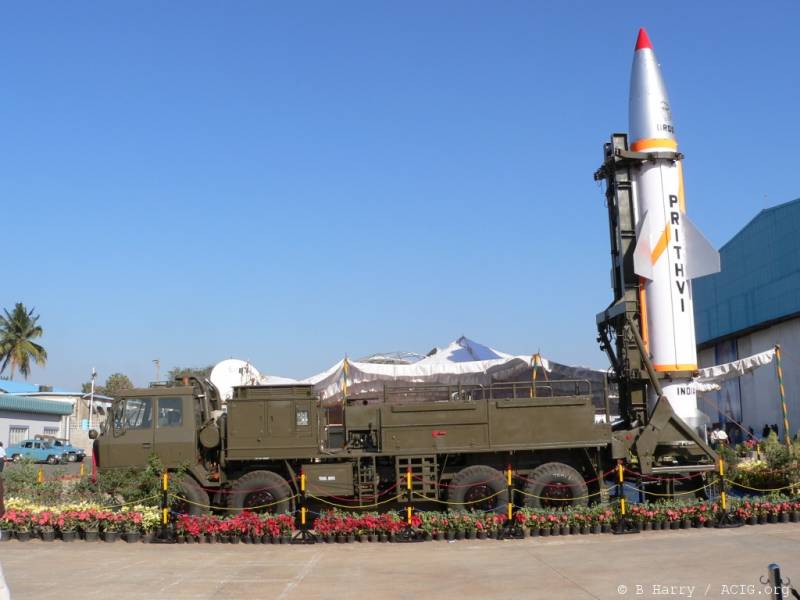
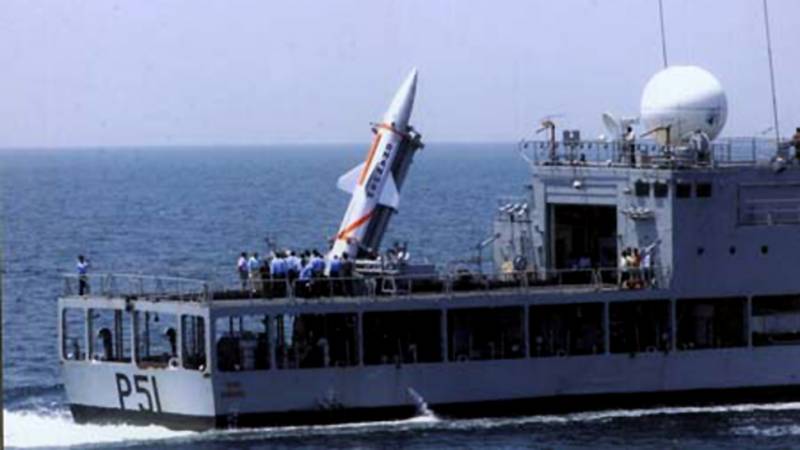
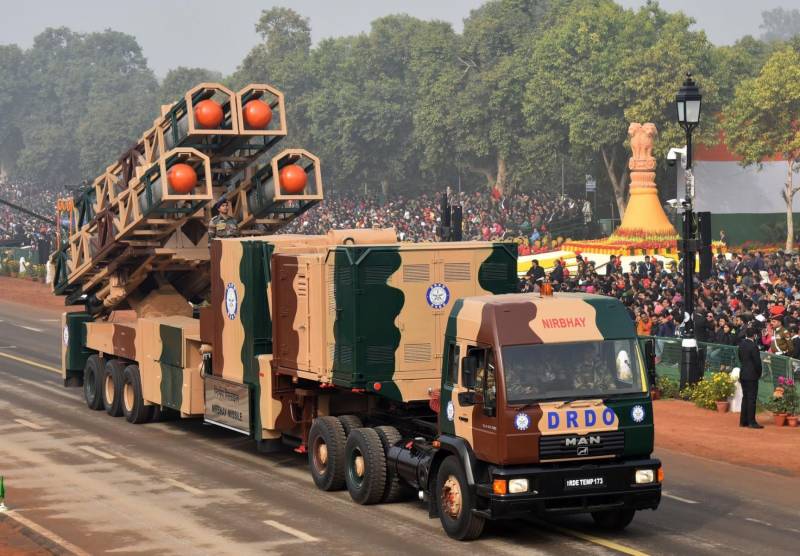
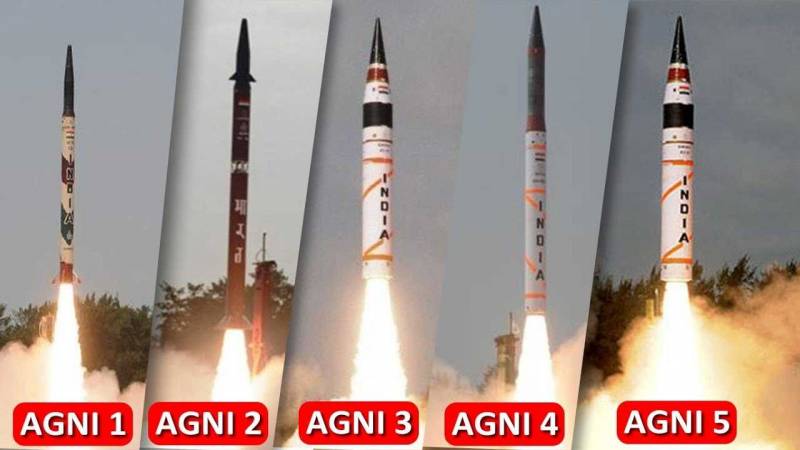
Information